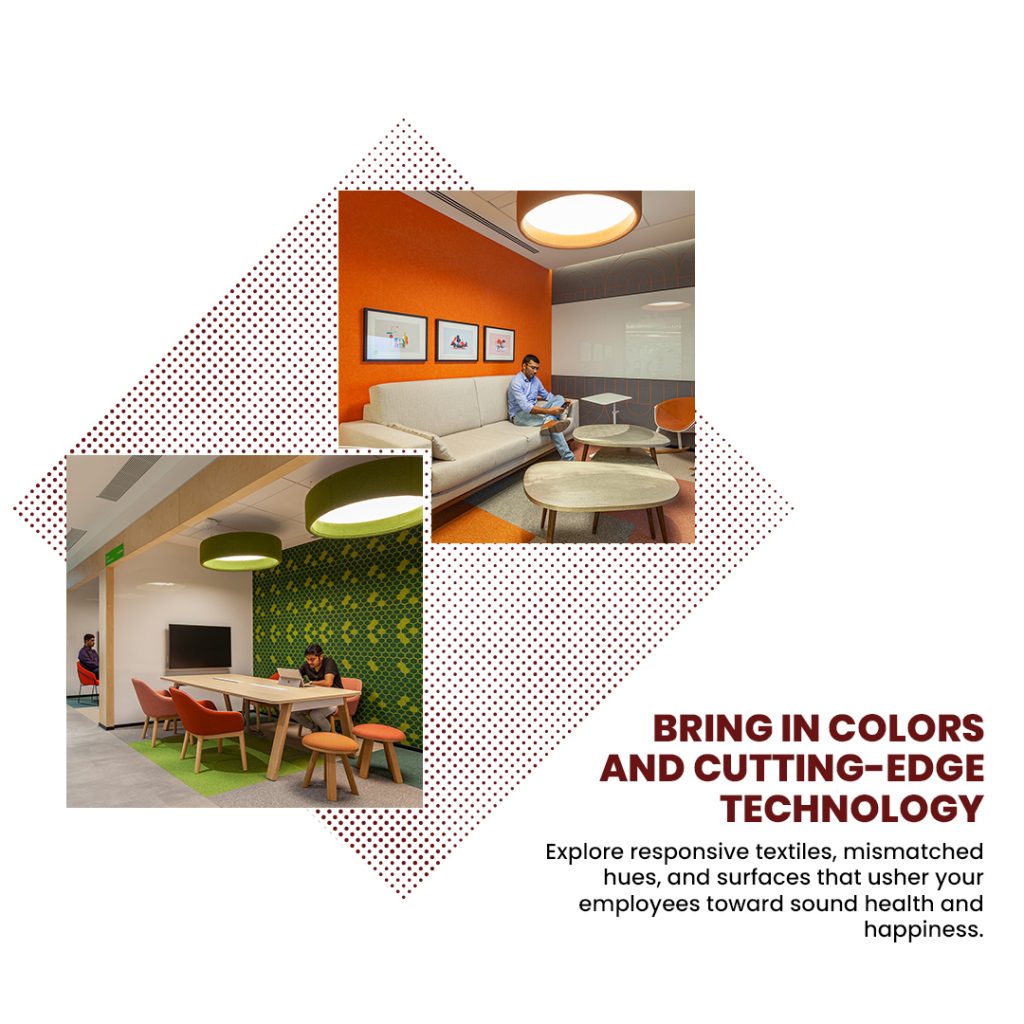So far we have talked about modern workspace design, the concept of biophilic elements, the “form follows function” principle, and how workspace design is integral to a company’s core operations. Now, let us focus on a relatively unexplored topic – landscapes and material textures.
The feeling of something is the best part of it. When you have had a bad day and the bed is your only solace, what you find therapeutic in the activity is the way the bed feels. The soft fabric sews itself on you absorbing the dust, negative energy, frustration, and all pain. The fuzzy pillows tickle your skin while the palm saunters miles across the bedsheet and that nagging lower back is now exposed to the world. No matter how descriptive we try to make the sentence, that feeling is inexpressible.
In a workplace, material textures and landscapes matter. They are the crux of comfort and the right environment. It helps in alleviating the sense of corporate sterility and induces diverse sensory experiences within the premises.
“People want to feel a connection to the places where they work, where they can see themselves in the space, versus something that feels imposed upon them.”
-James Ludwig, Vice-President of Design, Steelcase

A workspace needs to have a combination of surfaces, varying textures, and outdoor elements for it to defy the age-old norms of maintaining uniformity all across the office. This creates a comfortable and authentic space where employees can be themselves, they don’t even have to be self-conscious about that, the environment just allows them to be.
This concept can be extended to the division of focus and diffused work modes where the demarcation is apparent through a mixture of materiality approaches. Work performed can be massively affected by the nature of the surface we see and feel around us.

Imagine being cooped up in a snow-white cubicle with colleagues all around you in their frosty cubicles. It’s like working in a mirror maze where everyone is interchangeable. The plastic texture of the cubicles, artificial air all around, and the stone-cold floor. To counter this, we need awareness about textures and landscapes and how much of an impact they can have on employee satisfaction and engagement levels. Materiality can affect the quality of light and acoustics in a workspace and also our ability to see and hear properly. An exciting avenue for research as well as business is ‘responsive textiles’. These are surfaces that have the same effect that freshly cut dew-stained grass blades have on our skin. These responsive
textiles are made from ‘Celiant’, a fibre embedded with 13 safes, naturally occurring minerals have been shown in clinical tests to increase blood flow and improve thermoregulation.

Materiality creates content in the workspace in various ways. Rather than unscientific discipline or an aesthetic extravagance, the selection and juxtaposition of materials in the workplace can result in measurable health benefits for workers. Another point to ponder upon is color. Colors are highly impactful and shape our subconscious thereby dictating our work. Carefully integrating the right colors into workspace design can encourage employees as well as elevate their spirits. Putting texture to good use has the power to transform the entire look and feel of an office. At Exotic, our designers spend an immense amount of time articulating, understanding, and implementing materiality, textures, and landscapes to provide a one-of-a-kind workspace experience!
Found it useful?
Share our blog and let us know what you think in the comments!



